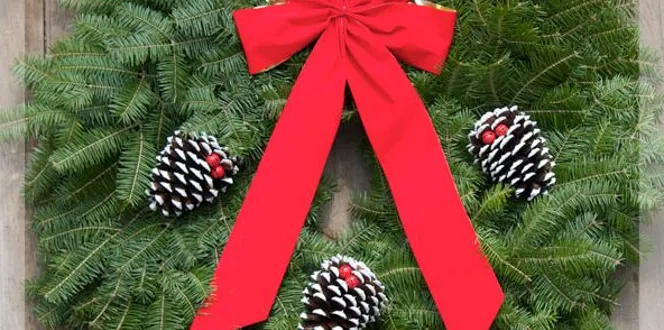While trees may feel like permanent additions in your home landscape, there may come a time when moving a tree becomes necessary.
You might find the tree is not in the ideal location for it to thrive, for instance, or it has outgrown the space provided. Another reason would be you are redesigning your yard and want the tree to be a key part of your new space.
Once you determine that you may want to move a tree, especially an evergreen, then a few other questions may arise, such as “Can evergreens be transplanted?” and “When is the best time to transplant evergreens?”
Let’s review some guidelines and tree moving tips so you can get a better idea of whether or not your favorite evergreen can be successfully transplanted to a new home in your landscape.
Best Time To Transplant Evergreen Trees Or Shrubs
Early spring before bud break is the best time to transplant evergreen trees.
You can also transplant evergreen trees and shrubs in late summer, which is defined as late August to mid-September depending on the region of the country you are in. Once you reach late September, your evergreens may not have adequate time for reestablishment before winter. And you certainly don’t want winter injury to plague your trees and shrubs.
Late summer/early fall is actually the preferred time for transplanting evergreens since it gives those trees the entire winter season to reestablish root systems. This will usually mean the tree is less stressed and can recover faster in spring.
Evergreen Versus Deciduous Transplant
Transplanting trees is different when you compare the process between evergreen and deciduous varieties.
Moving an evergreen tree can actually be more difficult because they hold onto their needles or leaves all year long, making them heavier and bulkier than their deciduous counterparts of similar heights.
How To Transplant An Evergreen Tree Or Shrub
The next step is reviewing how to transplant evergreens so the process goes smoothly and your tree has the best chance for success.
Follow these tree moving tips to ensure you don’t leave out any important steps.
- Water the soil 1 to 2 days before transplanting.
- Dig a new hole for your tree that is one and a half times the width of the root ball, The depth of hole should be where top of root ball is, 1 to 2 inches higher than surrounding grade. Having the new location prepared before digging the old tree ensures you limit the length of time the tree’s roots are exposed to the air.
- Determine your tree size. Trees that are more than 2 inches in diameter at the base of the stem are considered large and will need a professional ISA Certified Arborist® for transplant. For smaller trees, the root ball should be dug at 8 to 10 inches wide for each inch of trunk diameter.
- Using a sharp spade, dig your circle around your tree roots to create a root ball that is the measurement you calculated in the previous step.
- Move the tree. Cut a piece of burlap that’s large enough to cover the entire root ball and then carefully tip the root ball on its side and put the burlap in the hole, rolling the root ball onto the burlap and then wrapping and securing it with twine. Lift the tree out of the hole from the bottom, never lifting from the trunk. Gently carry the tree to the new location. Remember, with larger trees, the root ball can be much heavier and harder to keep together, which is why it’s better to have professional help when moving them.
- Plant the tree, ensuring the top of the root ball is no more than 1 to 2 inches above ground level. After placing the tree, cut and remove the burlap and twine and then fill the hole with soil from the original planting site.
- Water the tree thoroughly after transplanting.
How To Prepare The Plant
Watering may seem like a natural step after transplanting trees, but it’s also an important step to take 1 to 2 days prior to moving a tree so the tree roots aren’t too dry during the process.
Next, it’s true that trees can’t keep all of their roots during a move. Your goal is to establish a new root ball for transplant. Typically, you can safely prune roots that are 3 to 5 times the diameter away from your tree.
How To Prepare The Soil
Compared to deciduous trees, evergreens are generally more shallow-rooted.
But you still want to dig at a minimum of 1-1.5 times the width of the root ball and at least 1 foot deep, which is several inches deeper than the root ball.
Try this tree moving tip: To boost soil health in the new location before planting, you can mix 1 part biochar and 1 part compost with 2 parts soil. This will help limit soil compaction, conserve plant nutrients, and retain water in dry soil.
Post-Transplanting Maintenance & Care
Your goal after transplanting trees is to limit transplant shock.
To do this, keep your evergreen well-watered. Any newly planted or transplanted trees will require supplemental water besides just rainfall.
Also, mulching around your tree will help the soil retain moisture, keep weeds away, and supplement the tree with nutrients, further encouraging overall transplanting success. Remember to keep new mulch away from the trunk of trees to reduce the risk of fungal pathogens and rot.







